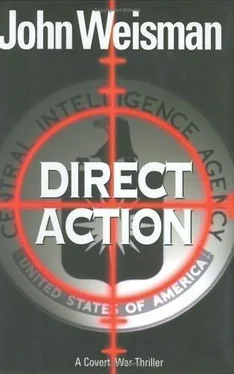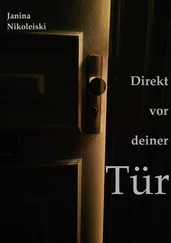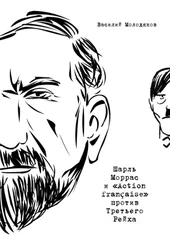Tom had more than an inkling how. They were onto him because Tom had been the last person to talk to Shahram Shahristani. They were onto him because they were keeping the American embassy under constant surveillance and he’d turned up there and left with a known CIA case officer. The same case officer they’d seen talking to Shahram Shahristani. They’d known because they were competent adversaries and they could put two and two together.
Reuven broke into Tom’s train of thought. “Did you see anything up there?”
“The shades were down and the lights were out. I saw nothing. But there was a gap between the shade and the sill and I used the camera.”
Reuven lifted the painter’s tarp to reveal the rack of video equipment. “While you head for the office I want to see what you got.”
3:19A.M. Reuven had scrambled the staff and 4627’s offices were in condition red. A pair of security cars sealed off the front and rear exits. The entrance to the five-story building was manned by an armed guard. Inside, roving two-man teams patrolled the corridors.
Tom had never seen Tony Wyman without a tie. Now Wyman, in a pressed pair of jeans and a thick cashmere turtleneck, monocle screwed into his right eye, squinted intently at the high-resolution plasma screen in Tom’s office. A police scanner played softly in the background as Reuven explained what Wyman was looking at.
“Tom-freeze the picture. Those are detonators,” the Israeli said, pointing at a slightly fuzzy image of objects roughly the size of tongue depressors. “Ben Said disassembles the backpacks piece by piece. He inserts several thin sheets of explosive to replace the layer of padding between the inner and outer linings at the bottom and back side of the bag. Then he removes one of the stiffeners they use where the backpack straps connect to the body of the rucksack, and replaces it with the detonator.”
Reuven pointed at the half dozen detonators lying on a kitchen towel-kitchen because the words Cuisine et Tradition in dark lettering were visible on the portion of the towel that was draped over the edge of the table. “I can’t be sure, but it seems pretty straightforward. The bottom end-the business end if you will-is pressed into the plastic explosive. It follows that the middle section is probably the battery that sends the electric charge into the explosive and detonates it. And the top is actually a small receiver and antenna-similar to what’s inside a cell phone.”
Tony Wyman nodded.
“Then he reassembles everything carefully.”
Wyman said: “Where does he get the thread?”
Reuven’s eyes brightened. “Good point.”
MJ looked at the Israeli. “Huh?”
“He has to sew the backpacks using the original needle holes and a thread that looks exactly like this-” Reuven reached across MJ, pulled her own Vuitton backpack from where she’d hung it over the arm of her chair, and tilted it. “Look at the stitching. The thread is unique. He had to have an inside source.” The Israeli returned the backpack and scratched himself a note. “I’ll check it out.”
“Good.” Wyman nodded. “How many bombs, Reuven?”
“If I could count the detonators, I’d know better,” the Israeli said.
“There are eight backpacks, Tony,” Tom said. “But there may be more.”
“Makes sense.” Wyman looked at Tom. “Do we have the place covered? I don’t want Ben Said disappearing on us.”
“Reuven took care of it.”
“I called some friends from the old days,” Reuven said. “Corsicans. Trustworthy. Nothing happens without us knowing.”
MJ pointed at the screen. “Why not just alert the French? Let them take care of everything?”
“They’d get the bombs and that’s all,” Tom said. “I want Ben Said.”
She crossed her arms. “The bombs are better than nothing.”
“They’re nothing without the bomb maker, MJ,” Wyman said. “He shifts locations, identities, whatever, and starts all over again. Now that he’s perfected the detonator design, we’re talking a matter of what-weeks?”
Reuven nodded. “Maximum.”
“So?”
“This time it’s high-fashion backpacks,” Wyman said. “And we have a real leg up because we know that. Next time it could be anything. Attaché cases. Carry-ons. Shaving kits. Makeup bags.”
MJ cocked her head in Wyman’s direction. “But won’t he shift his base of operation anyway if he knows you’re onto him?”
“It’s possible,” Wyman said, looking at her.
“But harder to do than it might appear,” Reuven said.
She looked at the Israeli. “Why?”
“Because,” Tom interrupted, “of two factors. The first is that, from everything Shahram Shahristani told me the day he was killed, Ben Said’s IED designs are unique. That’s how he makes his money. He doesn’t sell his know-how. He sells finished products. Also, he tends to oversee the jobs himself. He was in Gaza. Now he’s here, because this is where the bombs are going to be used. My guess is some of that is ego, but it’s also to ensure that whoever buys his designs doesn’t reverse-engineer them and steal the proprietary stuff.”
“Second,” Reuven broke in, “we’re not talking about making Molotov cocktails or homemade mortars,” Reuven said. “Those you can put together anyplace. These devices are precision IEDs. Moreover, it’s amazing what can be traced these days. You need a more or less sterile environment. No dust, no dander, because you have to be meticulous about the postexplosion forensics. A microscopic bit of soil that’s unique to a certain place. Or a tiny fragment of a towel-they can trace those things nowadays. So the environment can’t contain anything that forensics sniffers or the latest generation of airport screening devices might detect.”
The Israeli noted the skeptical expression on MJ’s face. “Look for yourself, MJ.” Reuven tapped the screen. “Run it from the beginning, Tom.”
“Huh?” Tom was distracted by the police scanner. “Listen.”
Tony Wyman turned toward the radio and the four of them fell silent. The police were responding to a possible homicide on rue Bachelet.
Tom turned toward the Israeli. “Reuven?”
“Later,” the Israeli said in Arabic, his eyes flicking toward MJ. “I’ll fill you in on the details later.” He switched back to English. “Run from the beginning, please.”
Tom dutifully clicked the mouse on the screen. The DVD began with out-of-focus moving images followed by a lot of black. “That’s from when I stowed the camera in the fanny pack.” He fast-forwarded until he saw the image of the safe-house wall. “Okay. Here’s where it gets interesting.”
He clicked on speed then slow . The jerkiness decreased and the camera started to pan smoothly across the room. In the foreground, the green-tinged video showed a folding picnic table draped with plastic sheeting on which sat several Vuitton backpacks in various stages of disassembly. To its left, at an oblique angle, was another, smaller picnic table, also draped in dark plastic, which held the detonators. In the gap behind those two tables sat a third. It was more substantial than the other two-more like a drop-leaf dining table. In its center Tom could make out a large sewing machine sitting atop a small crate. The right-hand side of the table was visible through the backpacks, revealing what appeared to be a pasta roller bolted to the end of the drop leaf.
The camera moved on, its autofocusing lens now concentrating on the back wall of the room. Some sort of plastic sheeting had been hung. As the camera panned, Tom saw that every one of the walls was covered in plastic sheeting.
Tom slowed the DVD’s speed so he could look more closely and waited until the camera moved from right to left. The plastic over the window made it harder to see, but the objects on the tables were still identifiable.
Читать дальше












